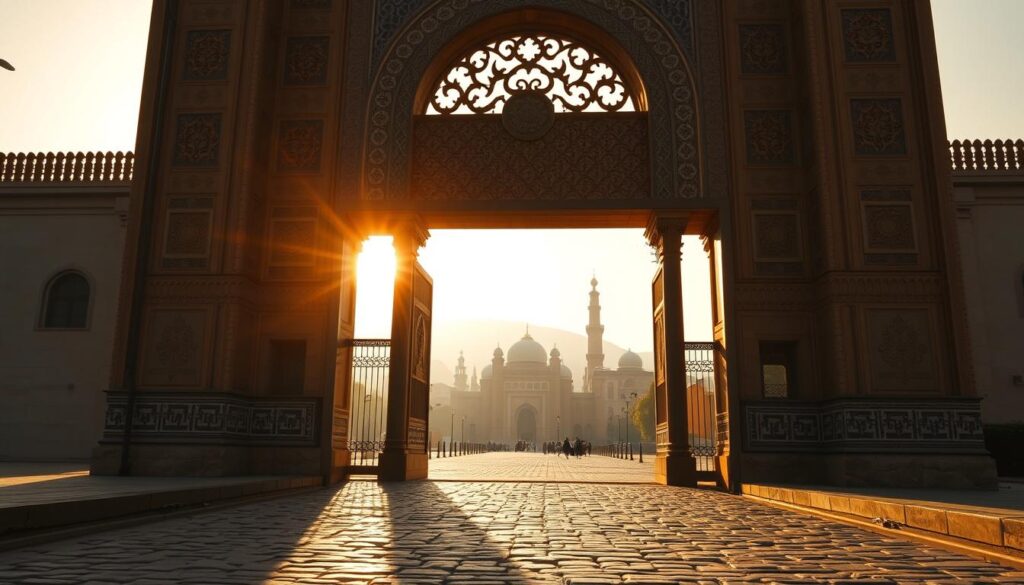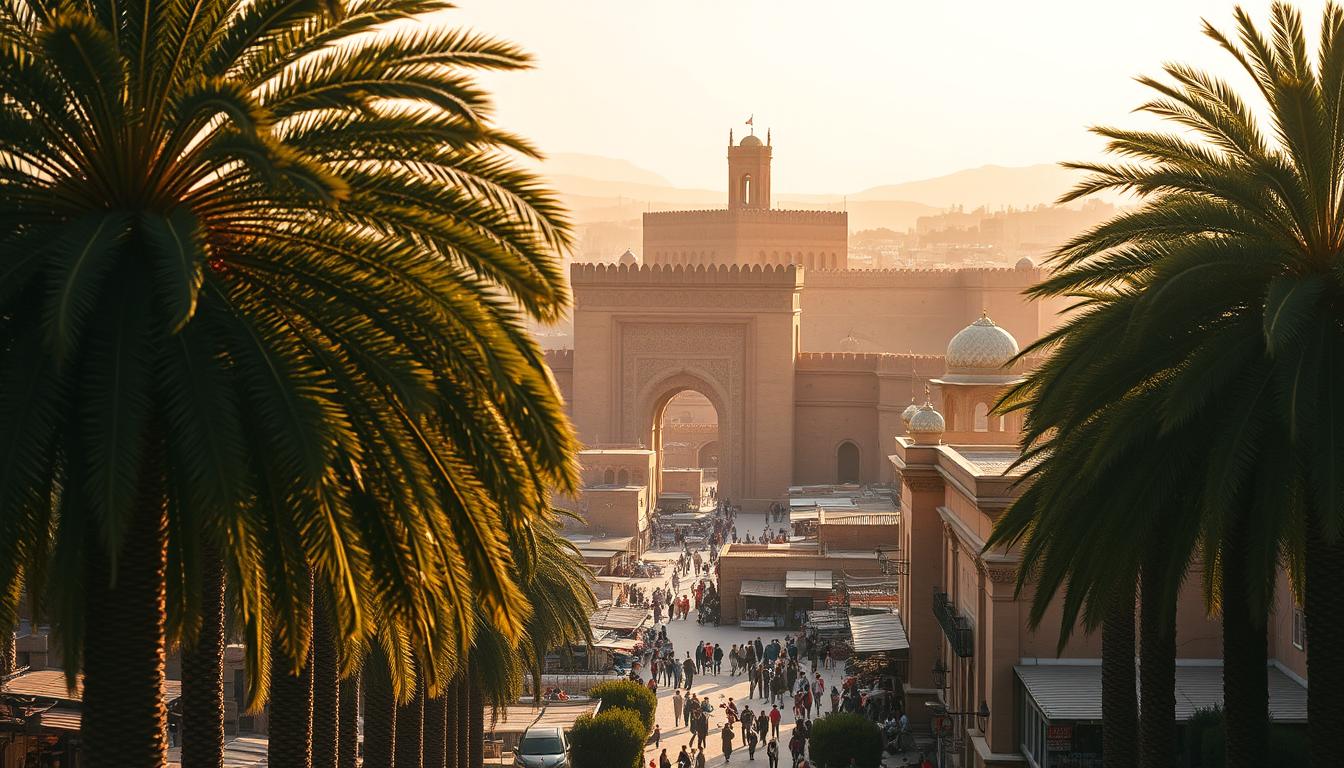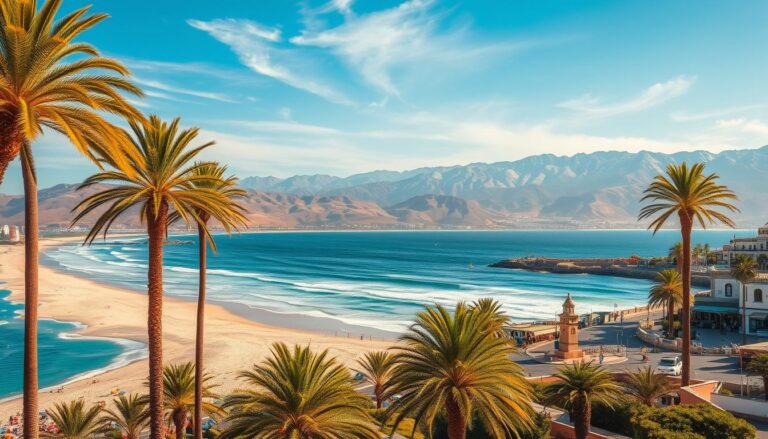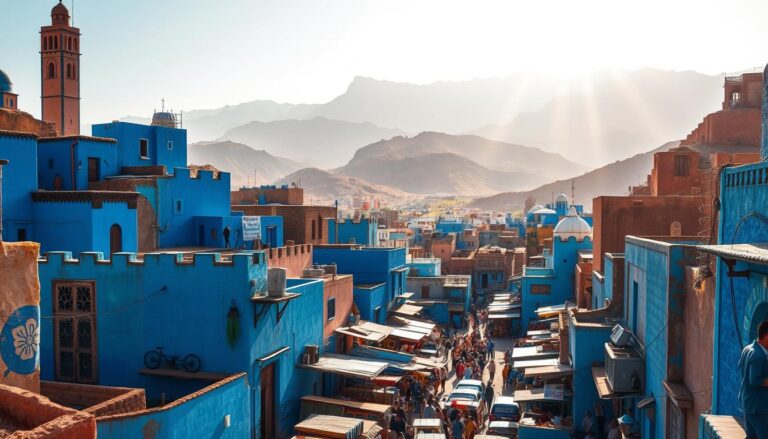Meknes, Morocco: A Captivating Destination for Travelers
Table of Contents
Meknes, Morocco: A Captivating Destination for Travelers
While over 12 million tourists flock to Morocco annually, fewer than 10% discover its best-preserved imperial city. Tucked between the Middle Atlas Mountains and fertile plains, this UNESCO World Heritage Site offers an authentic Moroccan experience without crowded streets or inflated prices. Unlike busier destinations, you’ll find locals eager to share their culture rather than push souvenirs.
The city’s 17th-century architecture tells stories of Sultan Moulay Ismaïl’s ambitious vision. Massive gates, grand mosques, and honey-colored walls blend seamlessly with modern cafes and lively markets. Here, you can sip mint tea in a centuries-old square one moment and enjoy rooftop dining with panoramic views the next.
What truly sets this place apart is its strategic location. You’re just 30 minutes from Volubilis, North Africa’s most intact Roman ruins. Sacred pilgrimage sites and rolling vineyards sit nearby, creating endless day-trip options. Best of all? Hotel rates and restaurant bills here cost half what you’d pay in Marrakech.
Key Takeaways
- Experience Morocco’s imperial history without tourist crowds
- Explore 17th-century architecture alongside modern amenities
- Use the city as a base for Roman ruins and cultural day trips
- Enjoy genuine interactions with welcoming local communities
- Save money compared to other Moroccan destinations
- Discover UNESCO-recognized sites with preserved authenticity
Historical and Cultural Tapestry of Meknes
Rooted in ancient trade routes, the city’s past whispers through its stone walls. What began as a 9th-century Berber settlement grew into a strategic crossroads, connecting Morocco‘s Atlantic coast to Saharan trading networks. The Meknassa tribe’s early vision laid foundations for what would become one of North Africa’s most remarkable urban transformations.
Origins and Early History
You’ll find the city’s heartbeat in its mercantile roots. Caravans carrying salt, gold, and spices fueled its growth long before imperial ambitions took hold. By the 11th century, this trading post became a vital link between diverse cultures – Berber, Arab, and later European.
The Era of Sultan Moulay Ismail
Everything changed when Sultan Moulay Ismail declared the city his capital in the 17th century. Known as Morocco’s “Sun King,” he rivaled France’s Louis XIV in grandeur. His 50-year reign produced 25 miles of defensive walls, monumental gates like Bab Mansour, and palace complexes that housed thousands.
You can still walk through the imperial city he designed – a masterpiece blending military might with artistic beauty. The sultan’s stables held 12,000 horses, while his Heri es-Souani granaries showcased ingenious architecture. These 17th-century marvels demonstrate how Moulay Ismail transformed humble foundations into a regal showpiece.
Exploring Meknes Landmarks and Attractions
Step through monumental arches into a living museum of Moroccan history. The city’s imperial gates and 17th-century architecture reveal stories of power, faith, and craftsmanship. Every corner offers new discoveries, from sunlit courtyards to underground vaults that once stored empires’ treasures.

Imperial Gates, Palaces, and Religious Sites
Begin at Bab Mansour, the grandest of Meknes’ 27 gates. Its emerald-green tiles and towering arches showcase Moroccan artistry at its peak. Walk through this world heritage masterpiece to enter the royal city’s heart.
Just beyond lies the Mausoleum of Moulay Ismail. Though non-Muslims can’t enter the tomb chamber, you’ll marvel at the free-to-explore courtyards. Intricate zellij mosaics dance across walls in geometric perfection. Come early to beat the midday crowds.
Don’t miss Heri es-Souani, where engineering meets ambition. These colossal granaries once held enough grain to survive years-long sieges. Climb to the rooftop for panoramic views of the Agdal Basin – your 70 dirham entry fee unlocks centuries of strategic planning.
Must-See Museums and Heritage Spots
The Dar Jamai Museum (currently renovating) offers two reasons to visit. First, its 19th-century palace gardens bloom with citrus trees and fountains. Second, the temporary exhibits display vibrant textiles and jewelry when open.
For spiritual architecture, head to Medersa Bou Inania. This 14th-century Quranic school lets you climb to rooftop terraces. Study carved cedar ceilings up close, then gaze across the city’s clay-tiled skyline – all for 60 dirham.
These attractions form a timeline in stone and tile. From medieval Islamic schools to imperial stables, each site adds depth to Meknes’ world heritage status. Wear comfortable shoes – you’ll want to explore every sun-dappled corridor.
Getting Around in Meknes
Navigating this compact imperial city feels refreshingly straightforward. Whether arriving by rail or exploring historic lanes, you’ll find transportation options tailored to different needs and budgets.

Transportation Options: Train, Bus, and Grand Taxi
Two train stations serve travelers: Gare de Meknès-Amir Abdelkader near the medina, and Gare Meknès-Ville for longer routes. You can reach Fes in 40 minutes (20 dirham) or Rabat in 2¼ hours (69 dirham). Book tickets online for popular routes like Marrakech to secure seats.
Buses offer cheaper alternatives. The main Gare Routière west of town connects to remote areas, while the CTM station near the tracks serves major cities. For local trips, blue petit taxis charge 5 dirham daytime fares – perfect for quick hops between attractions.
Navigating the Medina and Ville Nouvelle
The dry Oued Boufekrane river neatly divides old and new districts. Cross the central bridge (look for the golden arches landmark) to switch between Hamrya’s modern streets and the medina’s maze-like alleys. Most key sites sit within 15 minutes’ walk.
Save evening taxi rides for post-8 PM returns – fares jump 50% after dark. Buses run between neighborhoods but get crowded. Your best bet? Lace up walking shoes and let the city’s walkable layout reveal hidden gems organically.
Meknes – A Hub for Food, Shopping, and Culture
In the heart of the medina, every alleyway tells a story through sizzling spices and clinking crafts. This city transforms simple meals into art forms and shopping into cultural exchanges. Let your curiosity guide you through flavors and traditions preserved for generations.
Savoring Traditional Moroccan Cuisine
Follow the music of sizzling pans to Rue Antsirabe’s family-run kitchens. Local chefs work magic with clay tagines, serving tender lamb with prunes for about 30 dirham. Don’t miss Friday’s couscous – steamed semolina piled with seven vegetables – or the sunset harira soup served with dates.
Modern rooftop cafes along these streets offer mint tea with panoramic views. For authentic rotisserie chicken, head where locals queue – smoky aromas lead the way.
Bargaining in the Bustling Souks
The medina near Bab El-Mansur bursts with color and chatter. Artisans work brass into lanterns while cobblers stitch bilgha leather slippers. Start at Place Hedim’s arched entry – vendors expect friendly haggling. A good rule? Counteroffer half the initial price with a smile.
Olive stalls display jewel-toned preserves, and spice mounds scent the air. This city rewards those who treat shopping as cultural exchange. Leave room in your bag – that handwoven rug might just follow you home.







